
December 15, 2008
In this issue we feature "Fragrance for the Designated Driver: ‘Spritzers’ That Leave Us Giddy", we welcome a new guest contributor, Elena Vosnaki features a in-depth article "Jean Claude Ellena Is All About The Dirt!", "A Holiday Treat, an interview with the incomparable Monsieur Olivier Creed, "A Tale of Two Cities: Isfarkand by Ormonde Jayne" By Michael W. Davis and we feature the continuing series UNDER THE RADAR: Red Flower; A Magazine Interview With Founder and Owner, Yael Alkalay.
We continue this issue with Voluspa Floraison Collection: The Fragrances of Luxurious and Faraway Places, a new Bond No. 9 release called Boca, The Magazine is honored to interview the well-known Dominique Dubrana; Composer Perfumer of the Italian company La Via del Profumo, we offer a very warm welcome to John E. Smith, an author and herbalist with his article "Attars -Fragrances Of The Soul" and Bergdorf Blends Ajne for Blokes and finally, we end with my favorite "Christmas Present Fragrant Picks".
Fine wine, cognac, champagne and cocktails; have one and we feel just a bit giddy but drink a few and it’s time to hand the keys to your best friend. Actually, fine wine and spirits have a lot in common with fine fragrance: sillage, complexity, and an unmistakable multi sensorial experience. Tequila before Happy Hour? Indulging in the forbidden delights of Absinthe? Yes, as long as you spritz it, not sip it. So step up to the Sniffapalooza Bar and indulge.

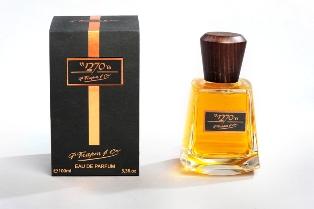
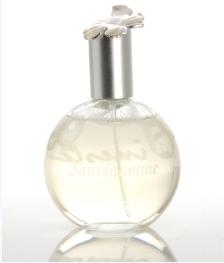
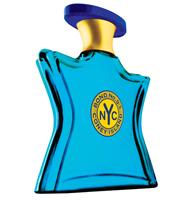
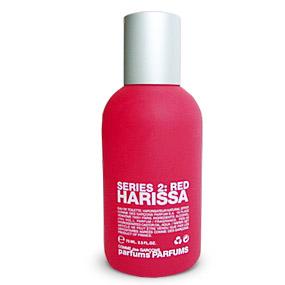
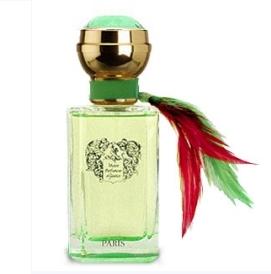
Jean Claude Ellena
Is All About The Dirt!
By Elena Vosnaki
The above somewhat shocking title is meant to grab your attention, dear reader.
You who have been conditioned to believe that Jean Claude Ellena, current in-house perfumer for Hermès and perfumery super-star for scentophiles everywhere, is producing limpid, minimalist compositions drenched in pale sunlight which evoke water sprites and eunuchs. You got the minimalist part correct, no doubt, to which I will revert shortly, but not the rest. Why? This is the point I will try to elaborate on and prove today.
First of all, the word “dirt” needs to be defined. Per Merriam Webster’s Dictionary, dirt means “loose or packed soil or sand (earth)”, a “filthy or soiling substance” (such as mud, dust, or grime) or “excrement”. I omit the metaphorical uses of the word, because they do not bear any olfactory connotations. Therefore there is the kind of dirt that makes you think of gardening ~or tetanus shots for us less wholesome souls; and then there is the kind that evokes unwashed armpits and impolite parts. Although it would be easier to simply claim and prove that Jean Claude Ellena has an affinity for the former, I will venture to further claim that he also utilizes a refined version of the latter with much conviction and pleasure. (Rhypophobiacs, it’s time to stop reading I guess)
Opposed as Ellena is to the “cheap tricks” of synthetic “clean” musks that provide the feel of laundry-clean to masses of consumers (thanks to associations with their overabundance in detergents and fabric softeners), he also looks down on the internationalist school of wanting to cajole the Asian market through transparent wan compositions and admires the gustatory trajectory that heavy-weights such as Angel and Lolita Lempicka walk on. Yet he aims to provide a refined new school through a vision of sparseness as he recently asserted among his collegues at a conference of La Société Française des Parfumeurs. Nevertheless this personal manifesto embraces the noble and controversial touch of dirt.
Although Jean Claude is not as famous as his mentor Edmond Roudnitska for the creation of private gardens, he is nevertheless very much a product of Grasse and la coté Provençal. It has long been my belief that the lapping of the Mediterranean Sea bestows sensuality in the people who are born or live close by to its coasts and a strong tie with the earth. Ellena appears to be a person immersed in sensuality in tandem with a keen intellect: His little confessions of famille in which he placed olfactory mementos under the napkins of everyone on Christmas Day and the fun of uncovering them; his reminiscences about a friend of his mother’s who avoided him and his memory of her Miss Dior creating an antipathy for the fragrance till she passed; his creations of tuck-in-bed olfactory tales for his children; his love of indolic jasmine and old, worn pullovers; his pleasure in having his cat leave an odorous mark of familiarity on him; and his sensual talk about the fatty, round, fleshy element of the natural essences which lent their caressing touch on fragrances of the time of his youth (the 60s) ~all conspire to assert that idea.
One of his favorite ingredients is vetiver (the essential oil along with vetiveryl acetate and vetiverol). To quote Chandler Burr “Vetiver Huile Essentialle from Haiti smells like a Third World dirt floor and Vetiver Bourbon from Isle de Réunion smells like a Third World dirt floor with cigar butts”. Ellena used vetiver in almost everything: In Vetiver Tonka (Hermessences) it’s the contrapuntal point to the coumarinic taste of tonka beans; in Terre d’Hermès along with lots of woody floraliser Iso E-super it gives an earthy touch to what is essentially a cut bergamot dripping juice on a smooth rock; in Un Jardin Après la Mousson it gives the sense of bog water and silent gloom after the tropical storm.
He has an affinity for the dusty green of tomato leaf (vert de tomate) which is “fresh as a slender branch ripped off a tree and rich as a strong beef bouillon”
[1] and which he put in Eau de Campagne for Sisley, his first creation from 1974. He also likes carrot seed oil (grain de carotte) with its earthy, iris-almost aroma, which is the jack in his card-tricks producing effects of flowers (osmanthus, freesia), fruit (mango) or even tea! He used it in Un Jardin sur le Nil alongside the gently smoky ambiance of incense, a theme that was also explored in Eau Parfumée au thé vert for Bulgari, incidentally the fragrance which put Ellena on the map, combining ionone beta (violet) with hedione (jasmine) and carrot root to give the effect of green tea steam. His Kelly Calèche uses the sweetly powdery and slightly catty odor of mimosa and upturned roots of iris to give the subtle florancy he experienced upon visiting the vaults of Hermès saddlers for inspiration. [2] Mimosa and Cassie provide the backdrop to Eau d’Hiver as well, redolent of a fluffy goose-down puff that is in direct conversation with the macaroons of Après l’Ondée by Guerlain. Un Jardin en Mediteranée rests on an accord of stemone and octolactone gamma, thus evoking bitter fig-leaves soiled by the gusts of wind that make the earth rise at Midi.
But Ellena’s appreciation for dirt of another magnitude is not without olfactory exempla either. Perhaps it can be traced through his documented admiration
[3] for the fantastically ripe Eau d’Hermès from 1951. Such is the legendary scarcisness of his fans (“only 40 people in France like it and that’s including myself” Ellena says) that Denyse Beaulieu, a writer and friend who loves it as well, upon picking its trail on an older gentleman besides her while buying books in Paris became convinced she had a brief glimpse of Jean Claude Ellena himself! It helped that the gentleman congratulated her of her taste when asked for confirmation on what he wore…
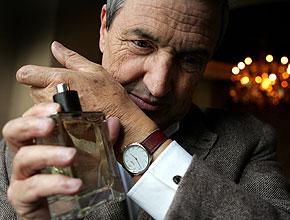
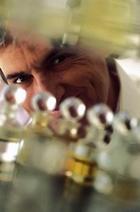
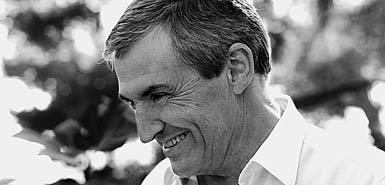
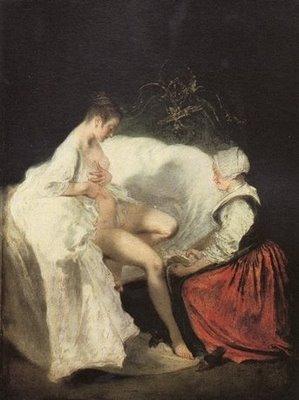
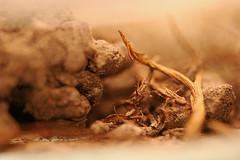
Jean Claude Ellena
Jean Claude Ellena
Jean Claude Ellena
The sulfurous substance that hides in the heart of grapefruit is another favorite game: In Love Again bypasses the problem of too sylfurous (and thus too garlic-like) by opting for a synthesized composition, yet you smell the bittersweet rind that has a hint of decay. Rose Ikebana reworks the grapefruit theme with a gourmand lacing of licorice. In Elixir des Merveilles the orange rind is candied but as if putrefying from the inside, redolent of proper French perfumes of yore. In Bigarade Concentrée for Frederick Malle the bitter austerity of Seville orange is given a point of departure thanks to a rubbery accent that comes from out of the blue. Cassis Buds with their odor of cat urine have pride of place in Ellena’s carousel of essences, as does the brutal iris nitrile (nitriles are compounds with a C≡N functional group). Rose Poivrée and Divine Bergamot for the Different Company ~a self-funded and masterminded project which should reveal the man’s inner vision~ were divinely animalistic and dirty in every sense of the word. Ellena has been honing his vision for years, subtracting rather than adding, paring his materials into no more than 200, with the challenge of coming up with unforeseen surprises and novel magical tricks of jolting us out of our preconceptions. The man and his work is perhaps the greatest illusion of them all: he’s all about the dirt, really!
*You might have noticed I excluded Rumba for Balenciaga from his oeuvre’s scrutiny: that’s because it’s more Ron Winnegrad’s work than Jean Claude’s, I feel.
Notes:
[1]Chandler Burr, The Perfect Scent, Henry Holt 2007
[2]Hermès Ailles http://usa.hermes.com
[3]From an interview on French TV
[4]Chandler Burr, The Perfect Scent, Henry Holt 2007, p.249
*Image credits:
La toilette intime by Antoine Watteau, courtesy of Wikimedia Commons
The Earth inside, photo taken by 10centdesigner on Flickr
Jean Claude Ellena and his essences, courtesy of Hermes
About the Author:
Elena Vosnaki is a multi-lingual historian and Bronze Age archaeologist from Greece who has been collecting fragrances since she can remember and writing about them in various publications around the world. After getting her degree in Musical studies the realization that perfumery is an art-form as well dawned on her and more formal studying of the fiber of that art form began continuing to this day.
Composed by Edmond Roudnitska as a progression from his iconic Femme, originally issued in only 1500 bottles and re-issued faithfully following the original formula, Eau d’Hermès is the prototype of animalistic cologne for someone like Michel Picolli in Belle de Jour and according to Ellena “a school of realism, the smell of the saddle”. A hint of leather, copious yet presentable amounts of sweaty cumin and spices (cardamom, coriander, cinnamon, and clove), and the subtle sexiness of jasmine coupled with filthy labdanum, fecal suggestions of civet opening up the more demure elements of lavender, sage, and petit grain: the whole smells like a living being that has something indefinably unsettling about him. Ellena’s own homage to the above fragrance, the masterful Déclaration, conjures the even sweatier vibe of a young hunk in pressed chinos, slowly enjoying cardamom-laced black tea. In a way Ellena took the dirty elements of Eau d’Hermès, passed them through a sieve and re-arranged them into a transparent, layered infrastructure that is utterly modern.
The lush opulence of night-blooming jasmine in the balconies overlooking the coast can be found in La Haie Fleurie de Hameau for L’artisan Parfumeur and in First by Van Cleef: he used not one but four different jasmine ingredients for the latter, full of animalic indoles, to achieve this effect. Even such a commonly accounted for smell as that of lavender, that quintessential prim note of cleanness (coming from the Latin lavare ~to wash~ and used since Roman times to scent linen), took an uncharted flight into wilder arpeggios on its odor-profile keyboard by embracing its darker licorice-like extremities in Brin de Reglisse (Hermessences). The gourmand along with the fecal lies in subtle things as well: Ellena often produces touches immersed in isobutyl phenyl acetate (sweet chamomile), ethyl vanillin (rich vanilla) and natural civet to his audience; he slowly vibrates them and chocolate ganache magically arises: the smell of excrement is crucial to the creation of exceptional chocolate, he confides. [4] Perhaps if we view his other gustatory creations under such a prism the apple-pie of Ambre Narguilé, the gin and tonic of Angeliques Sous la Pluie and the cool pepperiness enhanced by an overdose of Iso E-super of Poivre Samarkande take on a sinister nuance.
We are honored and pleased to have this opportunity to “gift” our readers with an interview with one of the fragrance world’s most influential master perfumers. Mr. Olivier Creed is the 6th generation of CREED family sons, and perhaps the most influential. The House of CREED has created some of the most experiential and classic fragrances of the past two centuries. At the time of this interview for a US magazine, I was told that Mr. CREED had not given an interview in fifteen years. We are truly blessed.
Olivier Creed was born and raised in a perfumed world. Following in the footsteps of his family’s previous generations, he was seduced early in life by the charms of perfume and the creation of exquisite scents.
MC: Do you believe your family has a gene that is passed on from generation to generation that enhances their understanding of scent and creates master perfumers. How much is nature and how much is nurture?
OC: Every generation feels fortunate to have this particular skill, the skill of comprehending and practicing the art and science of making fragrance. It is an innate ability. Yet like any ability, it must be developed. I started accompanying my father to the fragrance workshop as a child, to begin to learn the components of fragrance.
My son, Erwin, accompanied me to the fragrance workshop starting at eight years old. So there is talent, and there is the work to develop talent. It is also essential to be artistically well rounded. I learned painting in school, and I painted more than 100 canvasses before becoming master perfumer at CREED in 1975.
Georges Braque was a neighbor of ours and I was fortunate to paint with him upon occasion.
I find people who are interested in fragrance are also interested in fine food, music, clothing, architecture, sculpture and so on. This was true of my father, of me and certainly of Erwin. Fragrance is a part of life. For example, we CREEDs are also physically active, especially in sailing, mountain and equestrian sports, and that has added greatly to the ability to create fragrance, if you think about the smell of the sea or the smell of a fresh, green playing field when you first step onto it.
MC: Please define the brand's DNA for our readers. What are the core values of each and every scent under the CREED name?
OC: The DNA is the DNA, literally, of our family, of seven generations of crafters of scent. I think you are asking not a scientific, genetic question, but rather a question about philosophy. The philosophy is to create something beautiful and true. It's a simple statement, yet it encompasses so much. There must be the correct ingredients, natural ingredients. So we meet with farmers of, say, roses in Bulgaria, to choose the roses with the best oil. We meet with farmers of lemons in Italy to find the best and most fragrant. So we gather the best and bring it back to the workshop. We apply then our own artistic knowledge and experience, to create something we consider beautiful.
We believe the old methods of fragrance making are best, the hand methods used at the founding of CREED in 1760. We still use these today. All CREED fragrances are made in a single location, a workshop in the woods of France, in Fontainebleau, by me, Erwin and a production staff of approximately 30 people who handle bottling by hand. That is all. No factories. No laboratories. No market testing. No testing on animals, of course. The master perfumer decides. I am the master perfumer today, and I decide.
MC: What fragrance are you personally the most proud of and how was it born?
OC: The master perfumer must have the courage of his convictions, creatively speaking.
When I created Green Irish Tweed and the first bottles arrived at market, some proprietors
said, "It is too grassy. It will never sell." Today, the popularity of Green Irish Tweed is self-evident. It is an extraordinarily successful fragrance at market, and, of course, an artistic success. In any event, Green Irish Tweed was a custom fragrance for a private client before
it was offered to the discerning public, so I knew it was something special as the client was always very happy. In any event, there are many examples of this. I have been fortunate to create not only fragrances that are pleasing aesthetically, but also the most successful in the marketplace of any CREED fragrances in our 247-year history. Imperial Millesime. Love in White. So many more. Each is a story and a success. I feel very fortunate to have my work acknowledged and embraced.
MC: How did you learn from your father and what do you do to school is Mr. Erwin Creed, your son?
OC: I was allowed great artistic freedom by my father, and I allow Erwin the same. I was always encouraged no only to study, but also to experiment. Criticism was helpful, never destructive. I take the same path with my son. Create and learn. Loving fragrance and learning fragrance are interrelated. But what is the method of father teaching son? Let us say that in more than two centuries we have developed a method, and it is ours.
MC: Is fragrance an art or a science, or a combination please explain...
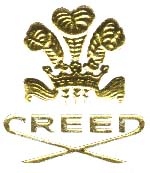
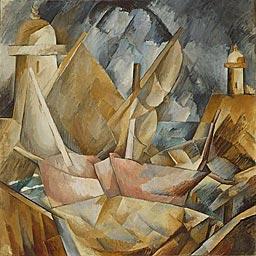
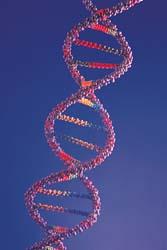
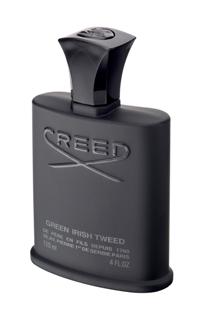
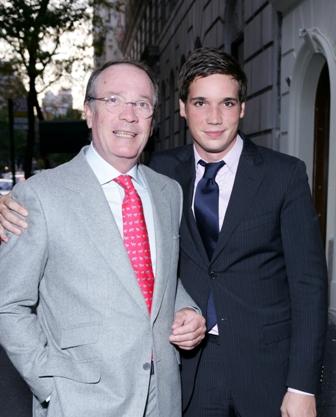
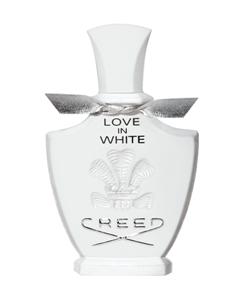
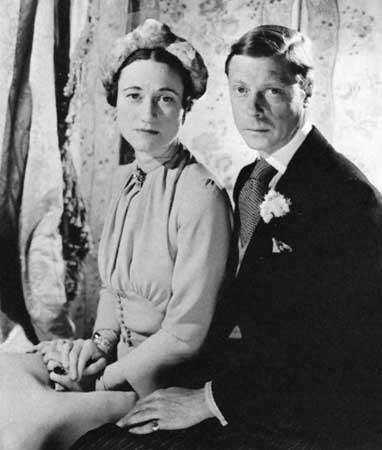
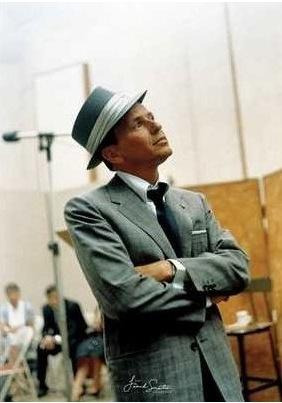
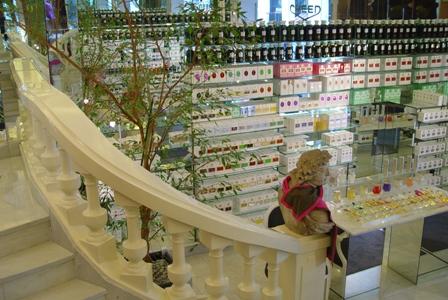
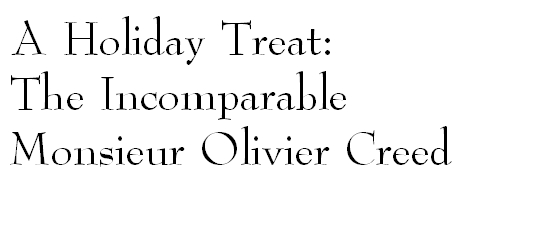
Painting by Georges Braques
MC: CREED was the “first perfumer to celebrities”, including many monarchs, the Duke and Duchess of Windsor, Sir Winston Churchill, and John F. Kennedy. For Grace Kelly’s wedding day scent, Fleurissimo, was created by order of her fiancé, Prince Rainier of Monaco. So began Hollywood’s love affair with CREED. Humphrey Bogart, Cary Grant, Frank Sinatra, Natalie Wood, Audrey Hepburn and others all wore CREED. I can go on and on…so CREED is an expert on celebrities. What do you make of this craze of celebrities marketing their own fragrance?
OC: They do what they do, which is a particular activity of this moment in time. We do what we do, in our own way, generation upon generation, with a vast creative history to guide us as we create that which is beautiful and true. Everyone is free to make fragrance. It is an art. Art welcomes everyone.
MC: What is your advice to our readers on how to use fragrance to explore their own distinctiveness?
OC: Within the context of CREED, the best way to do so is to explore custom blended fragrance. Many individuals -- some world famous, some known only in their communities -- have commissioned their own fragrance from us in our 247 years. It is a journey into self expression -- your portrait in fragrance, created by CREED, to stand for all time. More broadly speaking, as not everyone can commission a custom blend, there are, of course, more than 42 CREED fragrances available to the discerning public. With 40 to choose from, you will find one that expresses who you are. I am confident of that. Allow yourself time and opportunity to explore.
Writer’s Note: Special Thanks to Mr. Adam Brecht, Vice President of Corporate Communications for facilitating this interview.
In his words, “Great perfumers are not made but born, and those instilled with this unique gift and passion live for the joy of bringing their creations to life.”
Happy Holidays and Bonne Année!
CREED fragrances are also available at Neiman Marcus
and Saks Fifth Avenue
CREED’s Fragrance Boutique in Paris
OC: The very idea of Love in White is to be upon the high seas at the moment when the sails luft and fill with the wind that will move one not just in a physical sense, but also emotionally. Yet I wanted to communicate this on a global basis. So I chose ingredients from each continent: rice husk from Asia, magnolia from the Americas, orange zest from Europe and so on. The sea itself is a factor in the fragrance. And what is the result? A universal scent or a scent appreciated universally. I gave the first bottle of this fragrance to be sent to America to First Lady Laura Bush. Today, it is the best selling fragrance for CREED.
OC: Both. Fragrance is an art like sculpture, like symphony, like cuisine, a creative endeavor. Fragrances change emotion, certainly. Smelling a fragrance you love changes the way you feel, just as seeing a beloved painting or sculpture does. It is a labor the way sculpture is a labor. Can the creator say, "This is a perfect work?" Rarely. We work toward an idea, a subjective idea, of artistic perfection, fragrance by fragrance. When I am working on a new fragrance, I wear only that fragrance until I feel it is complete. That's an artistic judgment. But there is science, of course. If one does not know the proper temperature for the storage of a particular natural ingredient, one will be hampered at the most basic level. One must have a scientific insight into the melding of different essences. One must understand how soil and rainfall variations affect, for example, the quality of the orange crop or the irises. This is science. But without the artistic component, it is just science. So the artistry is the key.
MC: Love in White is very popular. Can you tell me about how this fragrance was created?
A Tale of Two Cities:
Isfarkand
by Ormonde Jayne
By Michael W. Davis
Some perfumistos evaluate fragrances -- their minds immediately fixate on the structural chemistry-its particular 'DNA;' from the molecular structure to the hydrocarbon tail that increases a scent molecule’s potency. So for those so minded--smelling Isfarkand by Ormonde Jayne, immediately brings to mind Iso E Super® and its intensifying behavior.
Some perfumistos inhale fragrance, getting lost in its emotional DNA. Immediately become one with its chemistry and are drawn to its tale. For those of us who are of the latter group, inhale and Isfarkand unfurls like a papyrus scroll.
Isfarkand derives its name from two cities, Isfahan and Samarkand. Isfahan, an Iranian province, is known for its beautiful architecture, bridges, mosques and castles, which create a magical and spiritual presence.
Samarkand, the second largest city in Uzbekistan, once part of the USSR, is known for its central position on the Silk Road between China and the West. One of Samarkand’s famous landmarks is the Bibi-Khynym Mosque built during the reign of Emir Timur (Amir Timur, Tamerlane) the 14th century Turco-Mongol ruler of Samarkand and conqueror of Central Asia. Timur is also known as Timur the Lame or Tamerlane and founded the Timurid Empire, which included all of Central Asia, Iran, modern Afghanistan and Pakistan, as well as large parts of India, Mesopotamia and Caucasus.
It is fitting that these two very different regions join as the namesake for Ormonde Jayne’s dichotomous fragrance Isfarkand.
Perfumer Linda Pilkington bottled a romantic myth in Isfarkand. According to legend, Saray Mulk Khanum—Timur’s favorite wife, who was called Bibi Khanum by the people—decided to build a mosque as a present for Timur while he was away on a campaign in India. Bibi employed the most skilled craftsmen of Samarkand and hired an architect from Isfahan to oversee the building of the mosque.
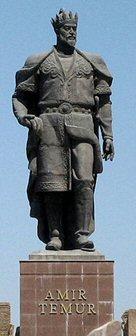
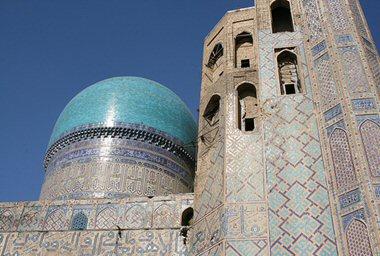
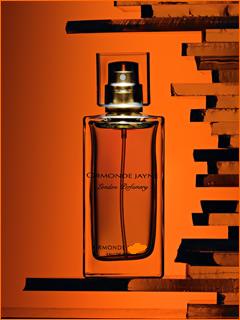
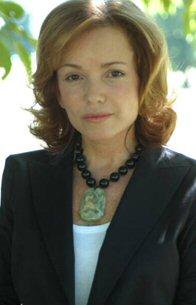

Linda Pilkington
The architect from Isfahan overseeing the construction of the mosque was charmed by Bibi Khanum. He was overcome with his unrequited love for her. The architect could not bear the thought of finishing the mosque because the cessation of work would take him away from Bibi.
Prior to finishing the final arch of the mosque, a messenger had brought news that Timur was returning. Bibi-Khanum pressed the architect to finish the construction. The architect agreed to finish it under one condition; a kiss for the beautiful queen. Bibi acquiesced and allowed the architect to kiss her, but only through the pillow that she put on her cheek. However, the architect’s kiss was so incredibly full of his passion for Bibi that it left a mark on Bibi’s cheek.
When Timur returned from his Indian campaign, he was overjoyed at the magnificent mosque. He gazed upon Bibi and joy turned to anger; he saw the tell-tale mark of the kiss. Bibi informed Timur of the architect’s request and how his kiss left a mark through the pillow. Timur ordered his men to find the guilty architect, but he had fled to top of a minaret where he flew home on wings he prepared days before Timur’s return.
Isfarkand is a scent that befits a legend. It begins with a hushed calm; a clean scent framed around fiery heart of pink pepper that burns like a passionate kiss. Lime, mandarin and bergamot provide a brief citrus introduction before making hasty flight. Cedar, vetiver and moss add a dry, arid feel like the gentle desert breeze blowing through Isfahan and Samarkand. Isfarkand is perfect for all seasons. It provides light, cool refreshment in the summer and peppery warmth in the winter. Like the hot and cold nature of love, Isfarkand can feel like the cold, icy stare of a Mongol ruler or the hot, passionate kiss of unrequited love.
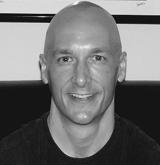
Michael W. Davis is a writer and management consultant in Atlanta, Georgia. Michael has been collecting and testing fragrances for fifteen years, and is an active contributing member of Basenotes. Michael holds a B.S. in psychology, an M.S. in organizational behavior and focuses on behavior modification in corporate environments. Michael also studies the effects of fragrance from a social psychology perspective.
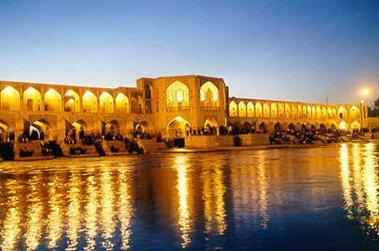
Bibi Khynum Mosque, Samarkand
UNDER THE RADAR: Red Flower
An Exclusive
Sniffapalooza Magazine
Interview With Red Flower
Founder and Owner,
Yael Alkalay
By Michelyn Camen

Voluspa Floraison Collection:
The Fragrances Of Luxurious
And Faraway Places
By: Felicia M. Hazzard
Now that winter is upon us, I cannot help but to think of a much warmer climate to be in. I am talking about year around blue water, sandy beaches and sunny skies. I am thinking of fabulous places such as Tahiti and the Caribbean. My neighbor will be celebrating 30 years of marriage this holiday season in Montego Bay, Jamaica. I want to get her a gift she will enjoy but I didn’t know what to get until I came across a collection of fragrances that just surrounded me with the feeling of flowers and warm breezes.
Voluspa Floraison Collection would make the perfect gift. There are two fragrances from this collection that come to mind and that is Floraison Jasmine Brown Sugar eau de parfum and Cocoa Tamarind eau de parfum. Voluspa is the name of the company which means “bringer of wisdom” or goddess of wisdom in tales of ancient Scandinavian lore and Floraison which is the name of this particular collection is French for “flowering or to bloom”. The prime of life. All of that is captivated in a frosted glass bottle of fragrance that is utterly feminine to wear day or night. Voluspa fragrances(and there are over 50 fragrances to choose) started out as a candle company but now this company has transformed into an empire of luxury items with incense, lotions, soaps and of course, parfums that are second to none. Each creation take hours to development and create with elegant packaging in a silk bag with a tassel for the 1.0 ounce purse spray and the 4.5 ounce parfum comes in a elegant box for grand presentation.
One sniff and you will be immediately transformed to an island oasis. The Floraison Jasmine Brown Sugar eau de parfum is a rich blend of pure Jasmine absolute, warm brown sugar, pink Freesia, Madagascar Vanilla and Nag Champa and the Floraison Cocoa Tamarind for the chocolate lovers contains blends of bitter cocoa, Mexican Tamarind, sweet orange, gardenia, clove bud and vanilla musk. Each is mix of magical exotic flavors that sends me racing to purchase my ticket to St. Barth.
The company Voluspa has a huge celebrity following such as Catherine Zeta Jones, Melanie Griffith, Halle Berry, Gabrielle Union and Eva Mendez to name a few.
So I say to my neighbor, Congratulations and bon voyage! You are not only in good company with the likes of Catherine, Melanie, Halle, Gabrielle and Eva but if you see any of them on the beach let them know you have a lot in common with them when it comes to wearing the Voluspa Floraison Collection because you also deserve the best.
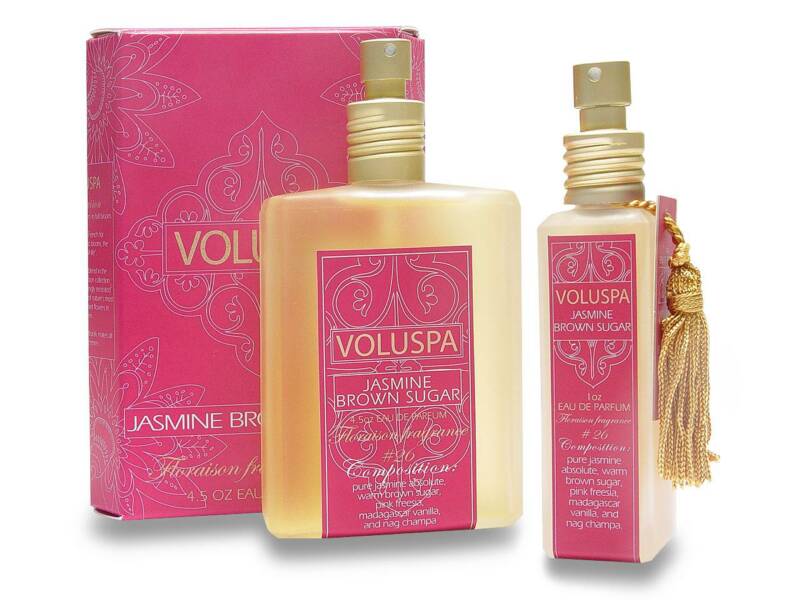
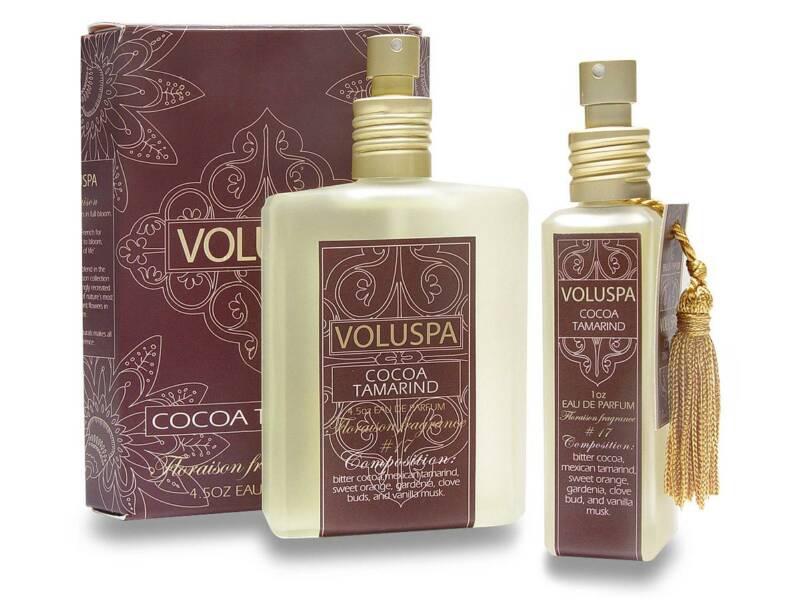
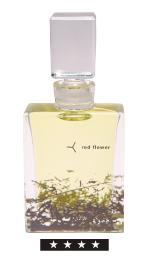
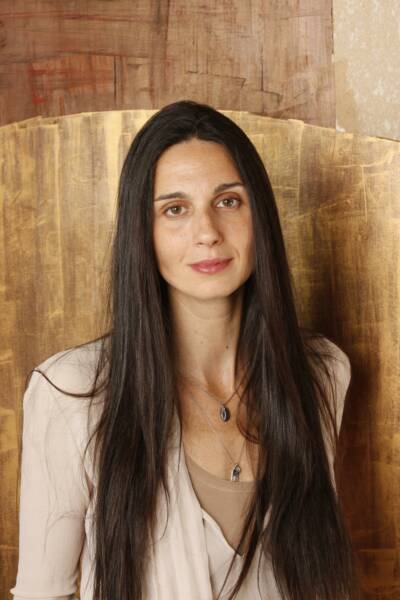

Bond No. 9 NEW release Boca
Press release...
At Bond No. 9, we are known for designing artisanal eaux de parfum that celebrate the neighborhoods of New York—Park Avenue … Little Italy … Bryant Park … Brooklyn … and now, Boca Raton. Boca Raton?
Yes, OK. Officially, Boca is located in another region—the land of everglades and mangrove trees, of Mediterranean-style palazzos and negative-edge swimming pools. And we admit, none of the above is much in evidence in New York. Nor are Boca’s yacht clubs or relaxed charm. On the other hand, New York-ese is definitely spoken down there, thanks to the presence of multitudes of émigrés from up north, who have brought their vitality, their smarts, and even their iconic specialty store, Saks Fifth Avenue, and now call Boca home.
Hence Bond No. 9 Saks Boca—a seductively feminine spicy-fruity floral composed of lily of the valley, black currant, gardenia, and freesia. Hedione lends this bouquet a shimmering radiance, while lingering notes of amber, cedarwood, cardamom, and musk allow the scent to infuse the tropical air like a sultry song.
Bond No. 9 Saks Boca is available in two different versions of the Bond No. 9 slender superstar flacon, each of them featuring our circular centerpiece logo as a key design element. On one bottle, the surface is studded with nearly 1,200 Swarovski crystal stones, accented with bright blue ($500). The other bottle, in pure white, features 520 bright blue and crystal stones ($325.00).
Arriving on counter November 8, 2008 and will be sold exclusively at Saks Fifth Avenue in Boca Raton.
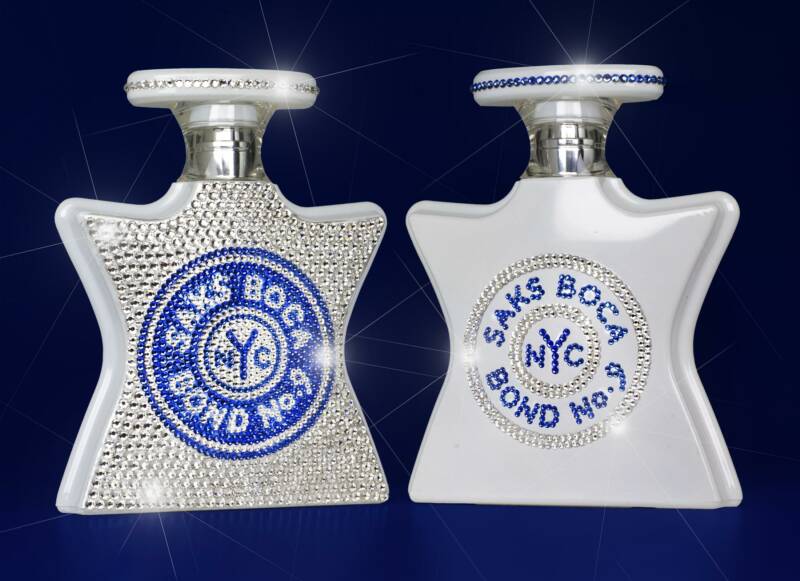
The Magazine is honored to interview the well-known Dominique Dubrana; Composer Perfumer of the Italian company La Via del Profumo . We offer an in-depth interview and he speaks with us about natural perfumery, olfactory psychology, Ambergris, Scents of the Soul, Oud, Sandalwood and inspiration.
"La Via del Profumo" is a company hat specializes in 100% natural perfumes and products. Relying on a deep and wide culture of the natural essences and of their effects, they are able to elaborate according to the rules and principles of aromatherapy and olfactory psychology true "psychological fragrances " that will carry to the people messages of "olfactory communication".
Interview
with Perfumer
Dominique Dubrana
Abdes Salam Attar
La Via del Profumo
By Raphaella Barkley
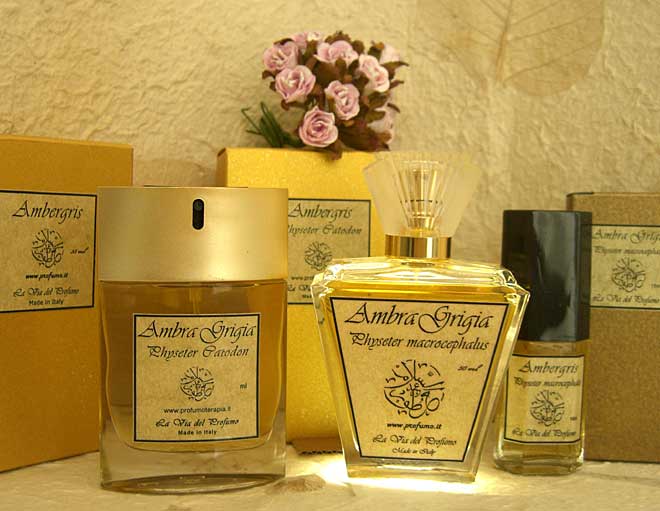
La Via del Profumo offers perfumery courses, offers various hard to find products and natural perfumes, buys and sells ambergris and has many articles, a blog and public forum for perfumers and students. Links are included at the bottom of interview and well as links to reviews.
Luca Turin
Perfumes
The Guides
Luca (Profumo.it) anything anything $$$$
On my table there sits a bottle of a very nice fragrance with my name on it. It was composed by Dominique Dubrana of Profumo.
It by a clever system you will find on his website. You choose the materials you want in the mix (and the price reflects which ones you picked), give him a few more indications and he composes a fragrance for you. It is ideal for people who want a bespoke fragrance but do not have $100K handy. LT
I have a trio named Tania, all interesting variations on the resinous floral theme I gave Dubrana, an all-naturals perfumer who possesses an unmatched gut instinct for where to seek beauty in this exceptionally difficult subset of the art. TS
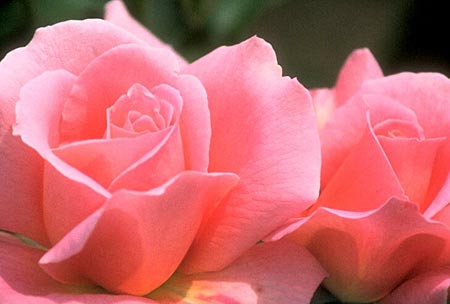
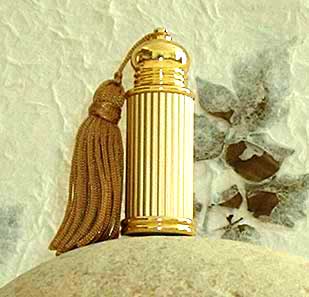
ATTARS - FRAGRANCES OF THE SOUL
By John E Smith
B.A. (Hons) M:URHP Dip C.H.
The 10th Century Persian physician Hakim Ibn Sina (known in the west as Avicenna) was known not only for his 14 volume Canon of Medicine (which influenced the healing profession for 900 years) but also for his development and use of Attars (pure fragrances). Avicenna was the first person to distil roses and other plant perfumes.
Attars are used in Unani Tibb (Middle Eastern medicine) to treat many disorders, particularly those associated with the heart, emotions and evolution of the soul (Ruh); adding to a range of elatives, exhilarants and nervines unequalled by other traditional medicine systems.
Avicenna developed 62 cardiac medicines of which around 40 were perfume essences (attars) they included many rose essences, amber, saffron, jasmine and Oudh.
The word ‘Attar’ is an Arabic word meaning ‘fragrance’ or ‘essence’. Attars are traditionally prepared by ‘cold rolling’ or ‘steam distillation’.
The most popular botanical substances used in attar preparation include: Oudh, Rose, Saffron, Jasmine, Tuberose, Amber, Myrrh, Sandalwood and Frankincense.
Attars are generally either cold rolled in stone troughs or distilled in ‘degs’ (traditional stills with copper lids sealed with cotton and clay); both of these methods have been used for nearly a thousand years. The plant materials used are replaced several times during the process to create a high concentration of their essences.
Many of the secret Attari formulae use as many as forty different essences often including the rarest and most expensive perfumes e.g. Oudh (eaglewood) so expensive it is sold in India by the gram, saffron, and the finest rose petals (about 30 roses are required for just one drop of pure rose attar).
Attars are manufactured to emulate, celebrate or honour great people, places, occasions or states of bliss.
One difference between Attars and other perfumes is that in the Islamic tradition alcohol is considered to destroy the soul (including the soul of a plant) so whereas alcohol and solvents are used in most perfumes (including absolutes) they are forbidden in the manufacture of pure attars.
A great Islamic teaching outlines “the six stations of the soul”, from “the station of the Ego” to the higher stations of “Divine Secrets”, “Nearness” and “Oneness”; and recommends the use of certain Attars, to support the evolution of the soul, through these realms of consciousness.
A Moroccan Whirling Dervish, who according to legend ascended to celestial realms while in a state of bliss, designed the Attar Jannat Al Ferdous, the attar was manufactured to emulate The Perfume of Heaven.
The Rose:
The perfume of rose works directly on the heart, and features in many of the “Soul Station” medicines. There are more than 100 different roses used in attar production and many types of attar will combine several of these (together with other plant substances including musk, sandalwood, amber etc.)Among my favourites are Persian Rose, Musk Rose, Kashmir Rose and Sudanese Black Rose.
Amber:
Amber is considered capable of preserving or restoring strength and vitality. In some countries it is worn by brides to ensure happiness and long life, and by warriors for protection in battle. In China amber is called ‘The soul of the Tiger’ and worn as a symbol of courage. In Tibet amber is an emblem of good fortune, health and success. Often considered to be the male equivalent of Rose, Amber attar also calms the spirit of the heart. There are many different amber attars, ranging from the lighter notes to the darker more masculine fragrances. My current favourite is the subtle fragrance of White Amber.
Oudh:
A resinous wood taken from ancient trees, the resin is produced as a natural immune response to parasitic growths and therefore only found in infected trees; as a result Oudh is exceedingly rare and expensive.
Oudh is highly cherished and traded amongst Unani, Ayurvedic and Chinese healers, exotic oil traders, alchemists and religious leaders, and is referred to in Biblical and other religious texts.
The resinous wood is burned on charcoal; it releases a perfume that inspires a relaxed positivity.
Oudh can also be purchased as Attar and is often priced in the region of 50 - 100 dollars per dram (3ml), depending on age, quality and origin.
I find that some of the cheaper Oudhs are quite good, but Oudh is an acquired taste, its perfume is often quite fecal (reminiscent of the smell of camels) but does change on the skin to an often sweeter, spicier smell. Oudh excels when combined with other plant extracts. A current favourite of mine is Mukhalat Habibi (Friend of Angels), which blends Amber, Oudh and many other natural perfumes.
Acknowledgements:
Qasi Shaikh Abbas Borhany
Yemen Times, Issue 863,Volume 13
Syedi Abdulqadir bin Qazi Habibullah, “Al Risalatil Nadira Fil Attur al Fakhirah” manuscript, Hiraz, Yemen.
John E Smith B.A (Hons) M:URHP Dip C.H. is an herbalist who also imports high quality Attars from India and the Middle East – he has trained with a Hakim from the Unani tradition. John can be contacted by email jesmithbodytonix@aol.com. His web address (re Attars) is www.herbalkhemy.com
The book ‘100 Herbs of Power’ by John E Smith includes more information on attars especially rose and Oudh. ‘100 Herbs of Power’ is available through Strategic Book Publishing, New York.
100 HERBS OF POWER
Classical Herbalist John E. Smith’s New Book Discusses the Power and Tradition of Herbs
100 Herbs of Power is an influential read detailing the traditional and medicinal uses of herbs for healing in a world where natural solutions are often overlooked.
Author John E. Smith sees a world that has a lot of potential for harmony and beauty, and yet also a lot of discord and things that make little sense in terms of universal betterment. “If I can make the tiniest difference, that’s great,” Smith said. And the difference that Smith has made is the writing of his new book 100 Herbs of Power. In this potent work, he describes the rich, colorful history and traditional uses of medicinal herbs from numerous cultures around the globe. He outlines the potential of these powerful herbs in a world where science often overshadows common sense.
This influential book is a must read!
About the Author:
John E. Smith, B.A. (Hons) M: URHP. Dip C.H. is a classical herbalist who has worked and studied throughout Europe, the United States, China, India, Australia, the South Pacific and the Middle East. His interest in traditional systems of healing has inspired this multi-cultural approach to herbal medicine.
For media inquiries, appearances, or other publicity — please contact:
Ellen Green — PressManager@aegpublishinggroup.com
AEG Publishing Group, Inc.
845 Third Avenue, 6th floor-6016 – New York, NY 10022
Publisher’s website: http://www.strategicbookpublishing.com/100HerbsofPower.html
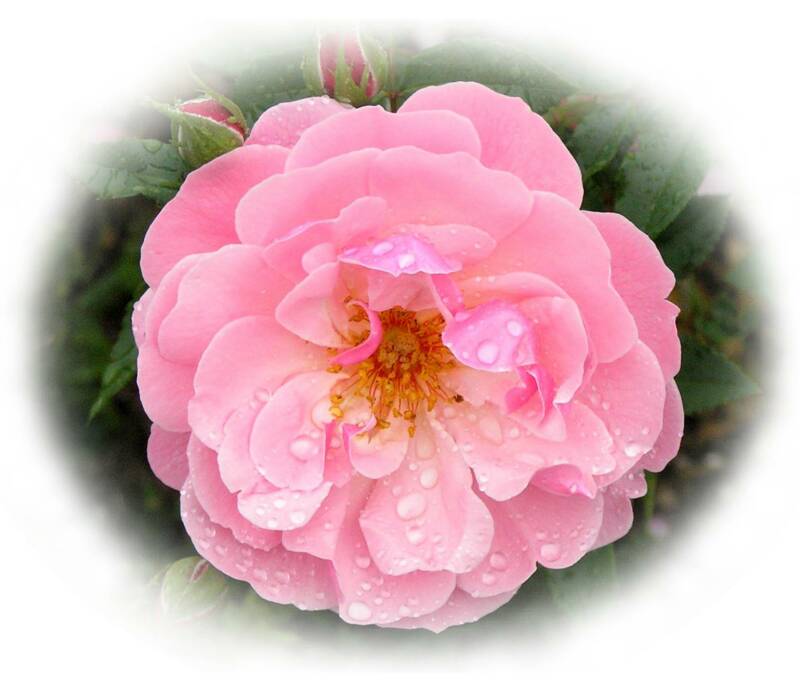
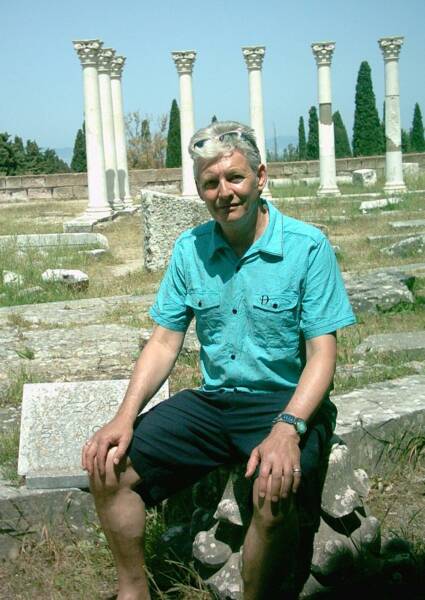
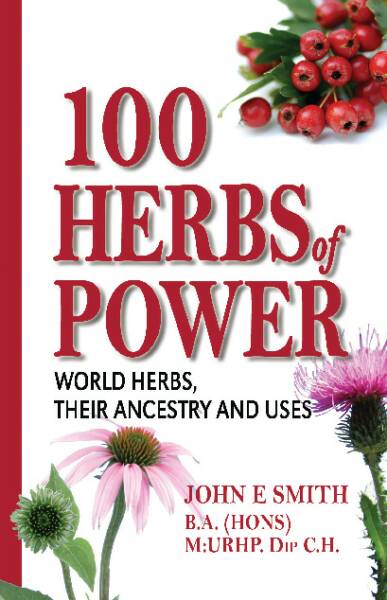
John Smith
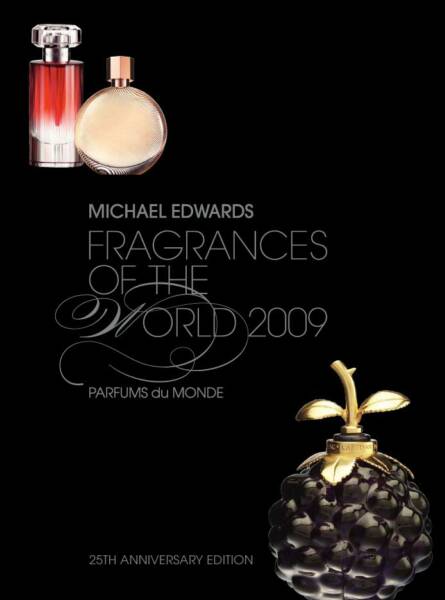
Bergdorf Blends Ajne for Blokes
Bergdorf Goodman Adds Men’s Collection to Ajne’s Luxury Fragrance Bar
Think lavish and luxurious and Bergdorf Goodman is the first thing that comes to mind. The palace of all that’s posh is the destination for New Yorkers who want the finest in products and pampering. And beginning in December 2008 Bergdorf is taking pampering to a whole new level when it adds Ajne’s Men’s Collection to Ajne’s Rare and Precious Blending Bar.
Ajne is America’s first truly authentic all-natural perfume house and all of our products are created at our laboratory in Carmel, Ca. The oils we use to blend the world’s most luxurious fragrances come from organic farmers in the world’s most exotic locations. These farmers only grow sustainable crops so many of our oils are worth more than pure gold! All of Ajne’s products are paraben, phthalate, and synthetic free; they are vegan, and packaged entirely in glass. Our fragrances are also based on the ancient Chakra system so they even have a balancing effect on the emotions and the physical body.
Ajne’s Men’s Collection is blended with the rich scents of cedar wood, sandalwood, oak moss, tobacco, myrrh, and ombrette seed (one of the most rare and precious oils in the world.) With names like Huston, Adler, Cool Bleu, and Spindrift, our fragrances honor some of the world’s most famous artists including actor Clint Eastwood and the great jazz saxophonist Charlie "Yardbird" Parker.
We have a complete line of prêt-a-porter fragrances for men and women and Ajne's Natural Perfumer Jane Hendler also specializes in custom fragrances (at our blending bar) where she offers clients the exclusive opportunity to create a 100% natural, totally individualized fragrance. She has blended fragrances for stars including Patrick Dempsey, Pierce Brosnan, Adrien Grenier Rob Lowe, Terrence Howard and Kanye West. She also has many actresses who are loyal clients including Kate Walsh who orders a bottle a month of her favorite perfume.
All of Ajne's products are paraben, phthalate, and synthetic free; they are vegan, and packaged entirely in glass. The oils we use to blend the world's most luxurious fragrances come from organic farmers in the world's most exotic locations. These farmers all grow sustainable crops so many of our oils are worth more than pure gold making them some of the most exclusive scents in the world. Our fragrances are based on the ancient Chakra system so they also have a balancing effect on the emotions and the physical body. Ajne’s flagship store is located on fabled Ocean Avenue in Carmel, CA. Our products are also available at our boutique at Bergdorf Goodman, Select Four Seasons Resorts, The Langham Spa
in Pasadena, and online at www.ajne.com.
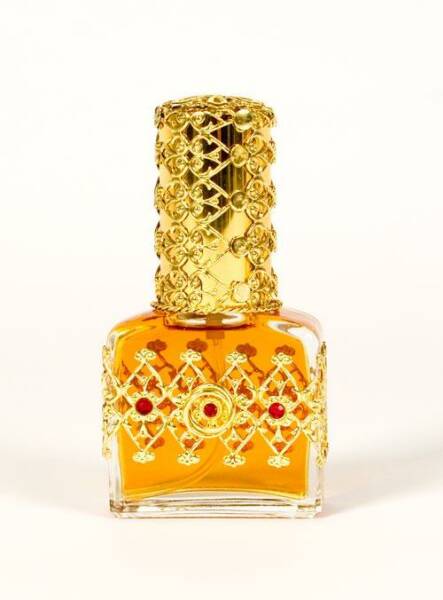

Raphaella age 4
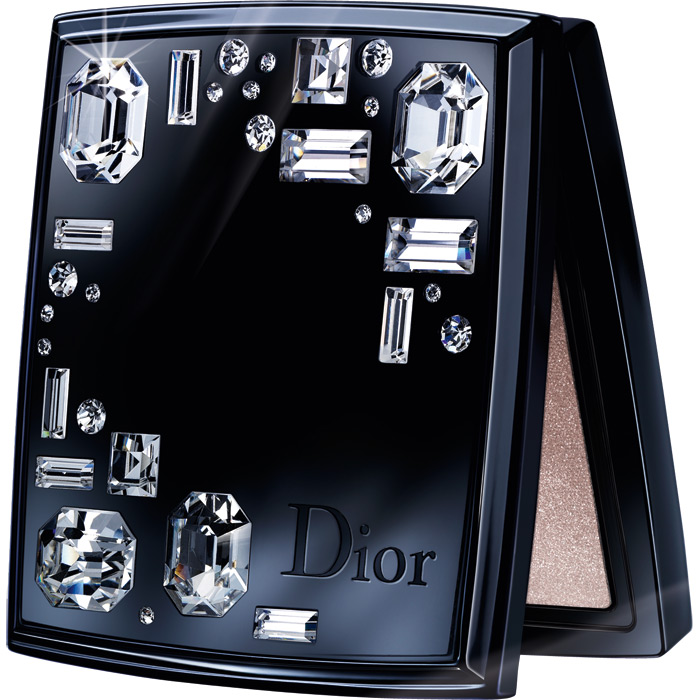
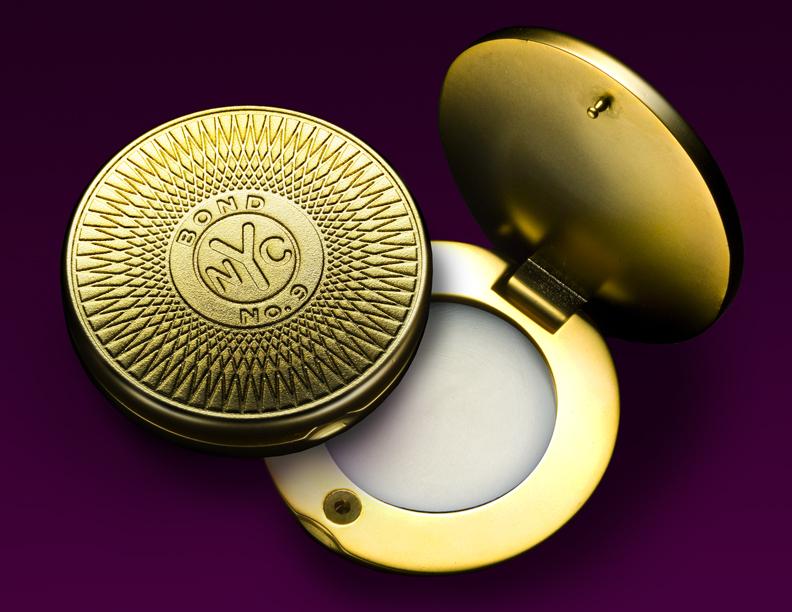
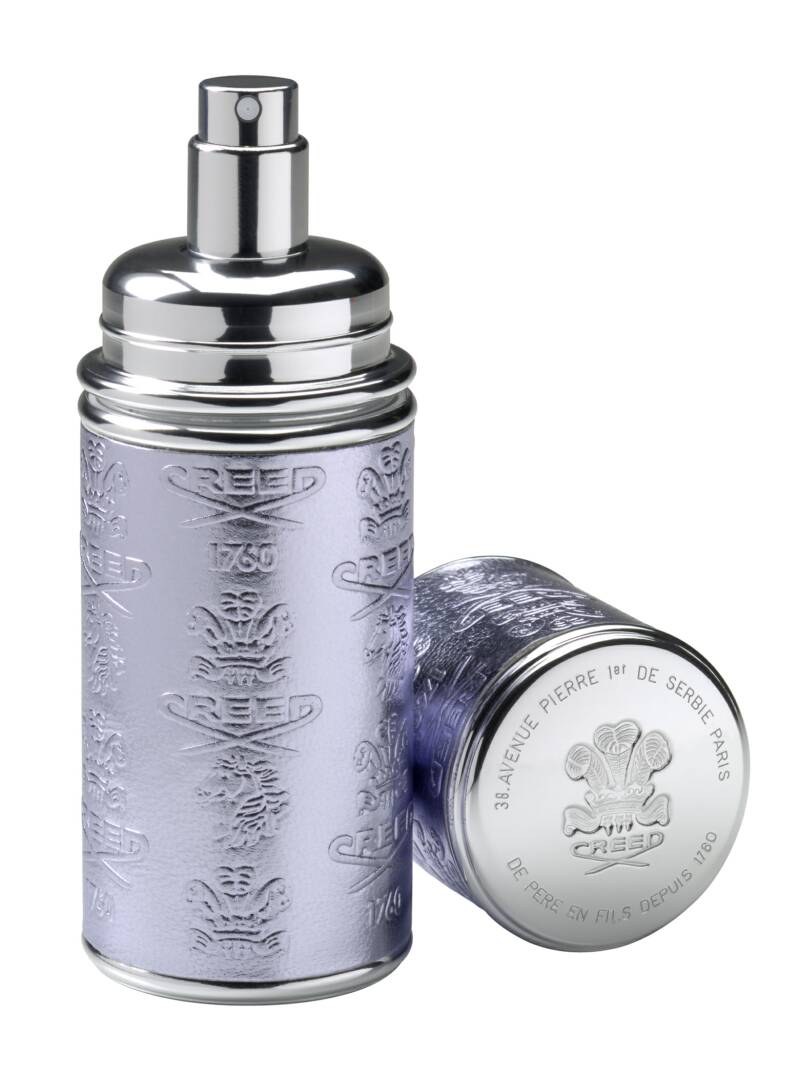
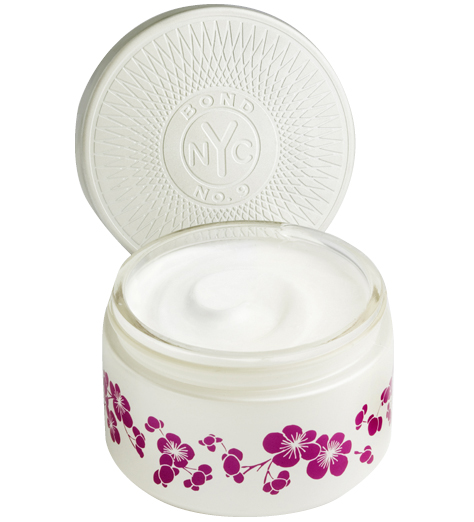
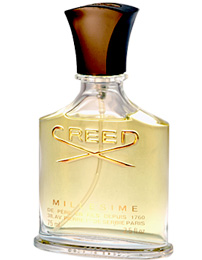
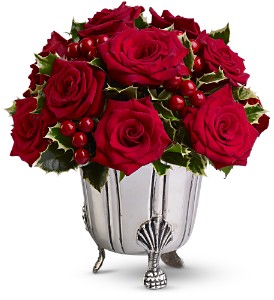
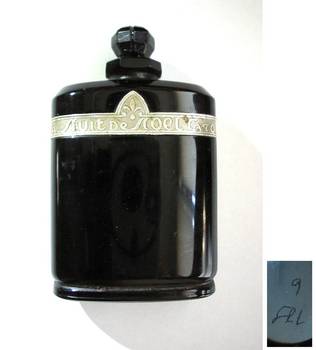
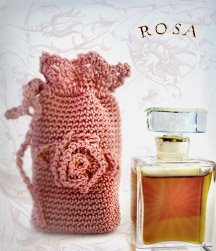

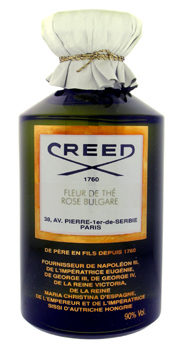
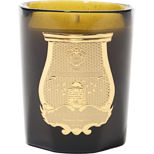
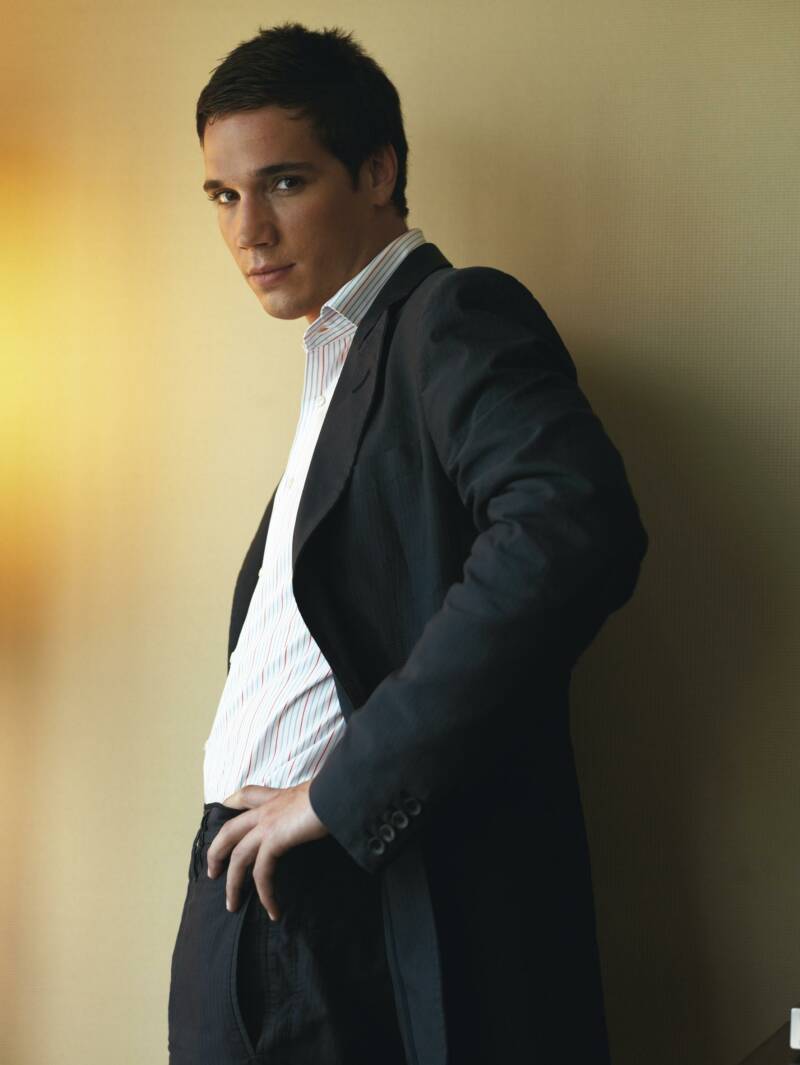
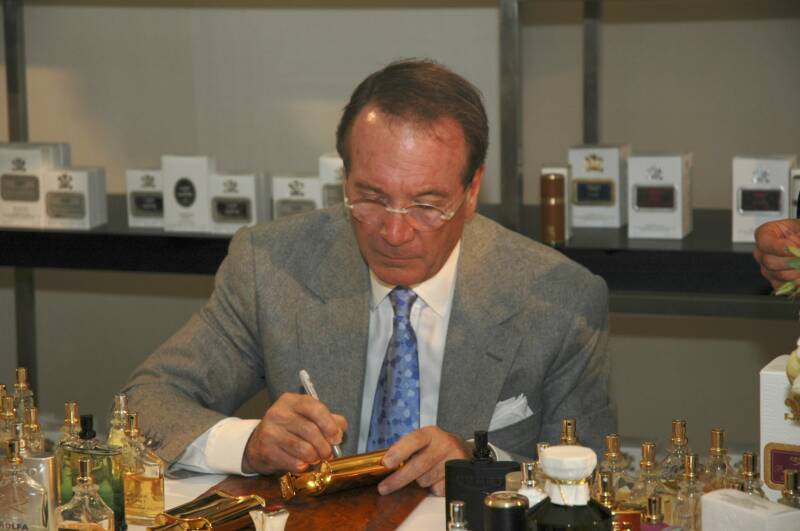
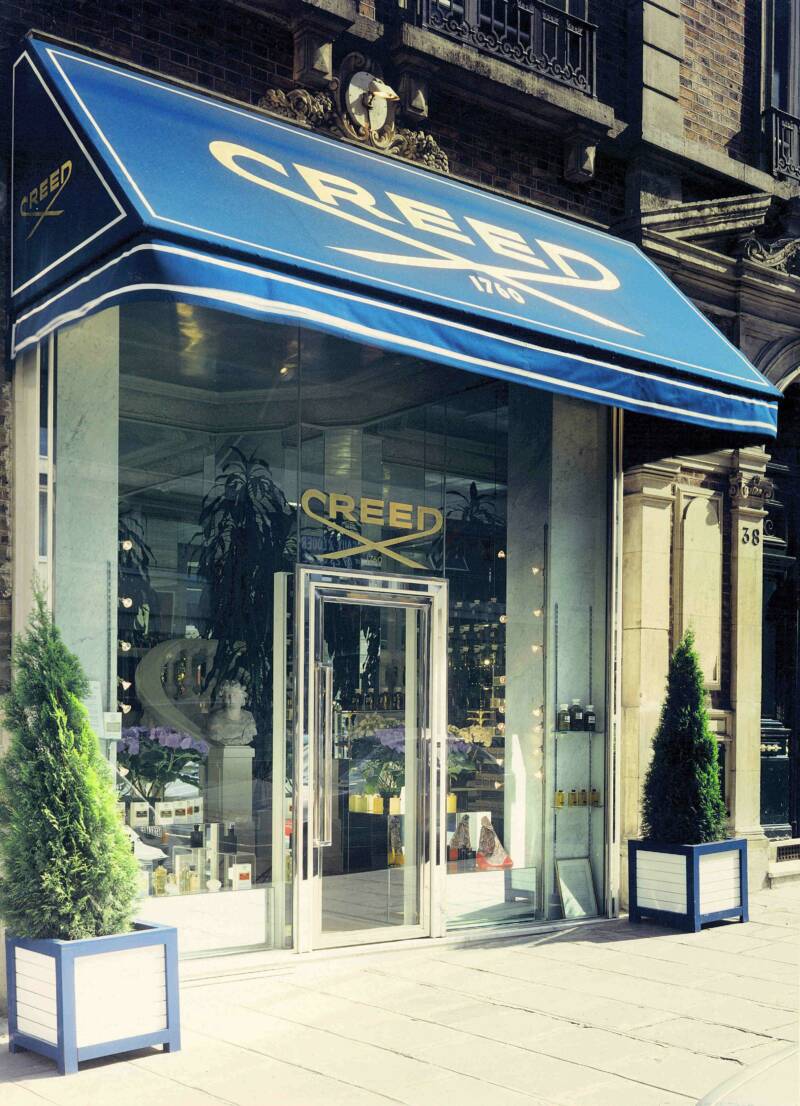
Oliver and Erwin Creed
Oliver Creed signing bottles
Erwin Creed

Jean Claude Ellena

Oliver and Erwin Creed